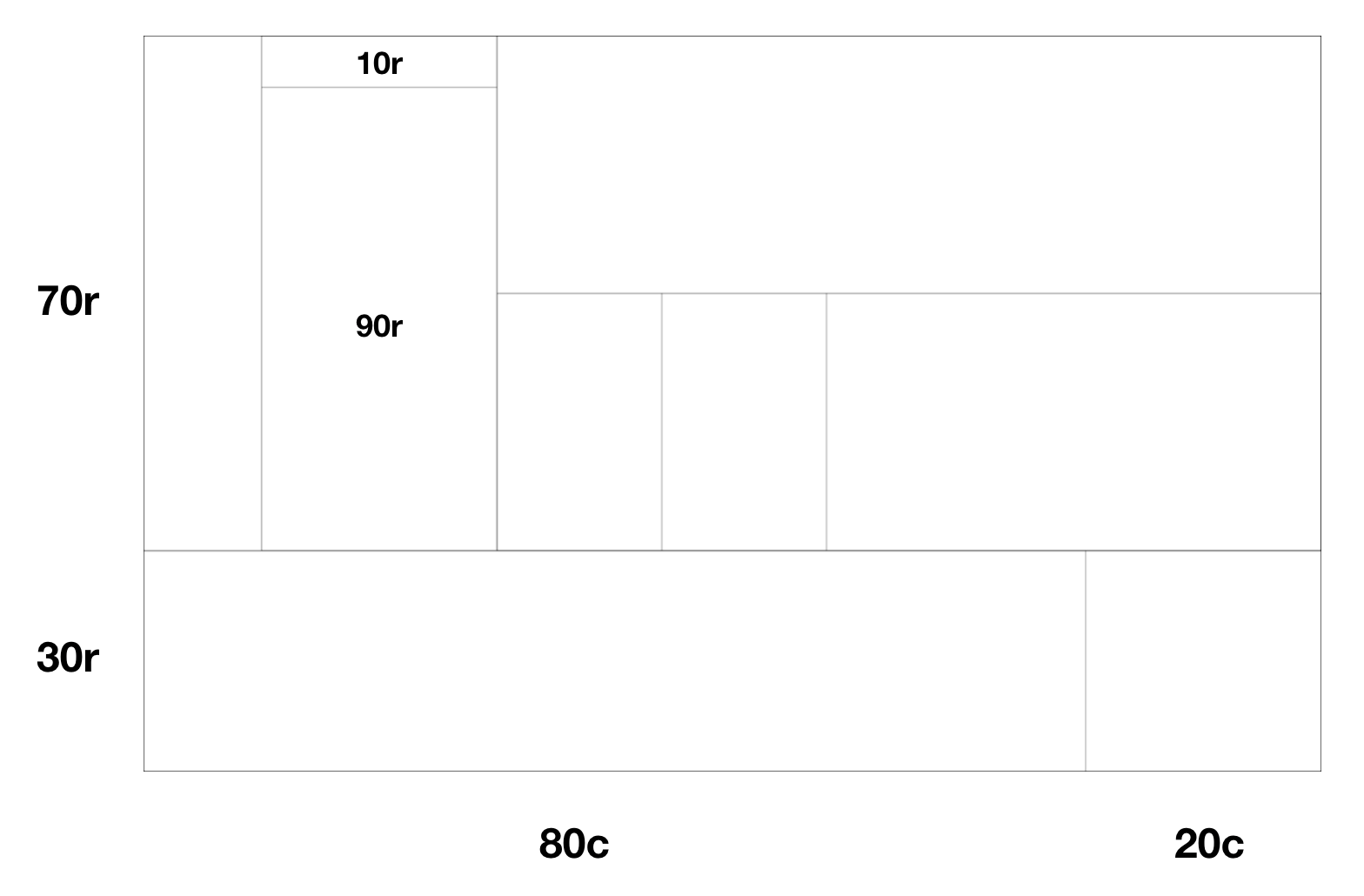📐📏 Tired of manually splitting
<div>'s? Trygriddy.
git clone https://github.com/Mckinsey666/griddy.git
cd griddy
pip install .
pip install griddy
A layout .json file should follow the following syntax:
- The json file contains one
jsonobject. - First level of the
jsonobject should have keyroot. - For (key, value) pairs in other levels, the keys should abide by the following conventions:
percentage: percentage of the children<div>'s height or width with respect to its parent's.layout type: defines a column layout or a row layout (column layouts will be inside a flex container). Ifris specified, the percentage is the relative height; ifcis specified, the percentage is the relative width.id(optional): used to prevent duplicate keys in thejsonobject.
key = percentage + layout type + id
- For keys in the same level, their layout types should be the same.
- For keys in the same level, it is better that their percentage add up to 100.
- If no more
<div>s are to be splitted, set the value of the key to benull.
{
"root":{
"70r":{
"10c": null,
"20c": {
"10r": null,
"90r": null
},
"70c": {
"50r1": null,
"50r2": {
"20c1": null,
"20c2": null,
"60c": null
}
}
},
"30r": {
"80c": null,
"20c": null
}
}
}Play with more examples in the examples directory.
Here <div> blocks are randomly colored for the sake of clarity with the --colored flag specified.
Plain borders surrounding blocks with --border flag specified.
The above picture shows how the json file syntax associates with actual layout generated.
griddy <name of the layout file>
An index.html file and a styles.css file will be generated in the current working directory. You can simply plugin the generated grid <div> (top-level <div> of class root with style width: 100%; height:100%) anywhere in your existing code.
| Arguments | Type | Explanation |
|---|---|---|
| --colored | bool | Whether to color the <div> blocks |
| --border | bool | <div> blocks comes with borders |
| --show | bool | Show generated grid in browser |
For example,
griddy layout.json --border --show




